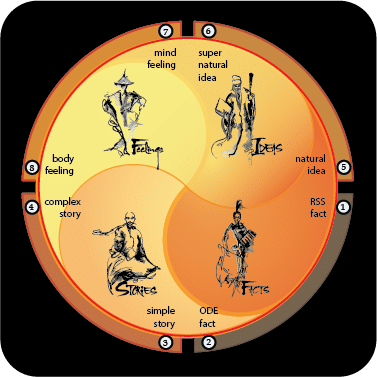Who Was More Right, Thomas Kuhn or Karl Popper?
First, I find this question especially insightful. Juxtaposing these two men and their work reveals a lot about science’s internal struggles.
In the broadest sense, then, all science looks to reduce infinitely complex, real world things to brief (by comparison) and useful descriptions of their nature. The problem, which both Popper and Kuhn tried to address, is how best to do this. Obviously, both men are brilliant, sincere, and have contributed greatly to our search for a way to know truth. Despite this greatness though, there exists a fatal flaw in both men’s work. Both employ a variation of what I call, exclusive reductionism. Here, things purposely get ignored and left out in the service of arriving at a workable description.
That they did this is not surprising. Science has embraced exclusive reductionism for centuries. No fault here. Only in the late Twentieth century did an alternative begin to emerge. The alternative is what I call, inclusive reductionism. Here ignoring or leaving out anything invalidates the science. And the only way to meet this criterion is to employ a knowledge of fractals and intentional bifurcation to create a more rigorously defined, but inclusive method.
Specifically, what did Popper include? A beautifully crafted set of logical limitations which he claims can yield a clear and certain progression in science. Popper seems to have dreamed of making science pure, in the theorist’s sense of this word. Kuhn on the other hand described himself as a physicist turned historian / philosopher. So while Popper roots his science in theory, Kuhn grounds his in real world events – how things have been unfolding, rather than the underlying essence of how things are or should be.
Popper’s science is neat and well ordered, and his discoveries occur through progressively more logical perseverance. Kuhn’s science is a messy proposition and his discoveries emerge unexpectedly at random points during the story.
To Popper, progressively traversing a well-design logical method is the only way to reveal the nature of the frog. To Kuhn, only the spontaneous and unexpected outcome of a well-designed and clearly recorded set of observations can accomplish this goal.
In reality, this argument (which viewpoint better represents truth?; theory or real world) has been undermining our search for knowledge for something like 26 centuries. To Parmenides, theory is the only truth; form is truth. Truth is what never changes. To Heraclitus, the real world is the only truth; you can’t step into the same river twice. Truth is what always changes.
Not surprisingly, this same argument appears again and again in science. Think Bacon vs. Descartes. Think Bohr vs. Einstein. The thing is, to leave out any of what these great men posited is to cripple science and the path to discovery. But how do you find a “unified theory of science?”
The following is a drawing which employs logical geometry to map their proposed preferences. In it, all possible paths to scientific discovery are honored equally. Here, Popper’s truth; rationalist science (the underlying logic is the nature of our world), exists in the upper right quadrant. And Kuhn’s truth; empirical science (the overlain story is the nature of our world), exists in the lower left quadrant. And for those brave enough to try to grasp this little map, obviously, this leaves two quadrants unspoken for. Literally, the material and intuitive. Perhaps, another day.
